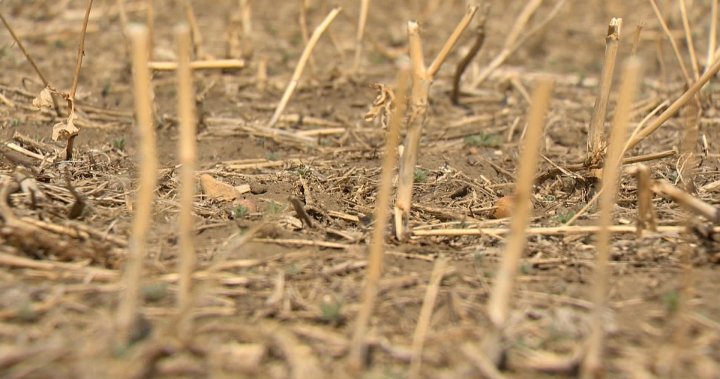The golden fields of Saskatchewan, Canada’s breadbasket, are showing troubling signs as the province grapples with persistent drought conditions that threaten this year’s crop yields. What was once lush agricultural landscape now bears the telltale cracks of moisture-starved soil, leaving farmers anxiously scanning the skies for rain clouds that seldom materialize.
“We’re looking at about 30 to 40 percent below normal precipitation across much of southern Saskatchewan,” explains Dr. Martin Reynolds, agricultural meteorologist at the University of Saskatchewan. “This isn’t just a bad week or two—we’re seeing the cumulative effects of multiple seasons with insufficient rainfall.”
The drought’s timing couldn’t be worse for the province’s agricultural sector. Saskatchewan produces approximately 40 percent of Canada’s grain crops, with wheat, canola, and pulse crops representing crucial economic drivers for the region. The Saskatchewan Agriculture Ministry‘s latest crop report indicates that nearly 65 percent of spring wheat and 58 percent of canola crops are rated as poor to fair condition—figures that have worsened steadily since early June.
For third-generation farmer Thomas Barton, who works 3,000 acres near Swift Current, the impacts are painfully visible. “The plants are stunted, and the heads aren’t filling out properly,” Barton notes while examining a wheat stalk that should be significantly taller this time of year. “Even if we get rain now, there’s damage that can’t be undone. We’re looking at yields potentially 30 to 40 percent below what we’d consider normal.”
Recent sporadic showers have brought limited relief to parts of central Saskatchewan, but meteorologists warn these isolated precipitation events aren’t enough to reverse the moisture deficit that has accumulated over months. Environment Canada‘s seasonal forecast offers little comfort, suggesting continued below-average precipitation patterns through August.
The economic implications extend beyond individual farm operations. Agricultural economists estimate that prolonged drought conditions could reduce Saskatchewan’s agricultural output by $2.5 billion this year, creating ripple effects throughout the province’s economy. Rural communities, equipment dealers, and grain transportation networks all face potential downturns if harvest yields fall significantly below projections.
Provincial agricultural officials have activated drought response protocols, including accelerated processing of Farm Support Program applications and expanded access to emergency water infrastructure funding. Meanwhile, the Saskatchewan Crop Insurance Corporation has adjusted its inspection schedules to more quickly process potential claims from affected producers.
Some farmers have embraced innovative drought management strategies, including the adoption of drought-resistant crop varieties and moisture conservation tillage practices. “We’ve been gradually shifting toward more drought-tolerant crop varieties,” explains Sarah Matheson, who farms near Yorkton. “But there’s only so much adaptation possible when the fundamentals of moisture aren’t there.”
Climate scientists caution that while individual drought years have always occurred in the prairie provinces, the increasing frequency of extreme weather events aligns with climate change projections for the region. This raises difficult questions about the long-term sustainability of current agricultural practices in a potentially drier future.
As combines prepare to roll across Saskatchewan’s fields in the coming weeks, the province’s agricultural community remains resilient yet realistic. The question hanging over farm kitchens and grain elevators alike is whether this year represents merely a challenging season or the acceleration of a more permanent shift in the prairie climate that could fundamentally alter Canada’s agricultural landscape.

























